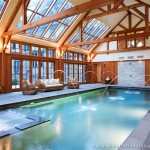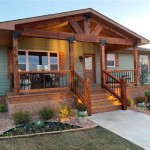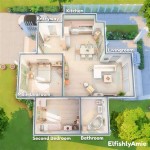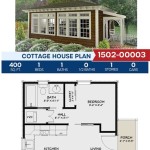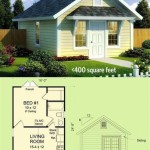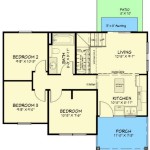Basic Building Plans For Homes
Building a home is a significant undertaking, requiring meticulous planning and attention to detail. At the heart of this process lies the blueprint, a set of detailed drawings that outlines the structure, layout, and specifications of the future dwelling. These building plans serve as the roadmap for the construction team, ensuring that the final product aligns with the homeowner's vision. Understanding basic building plans is crucial for homeowners to effectively communicate their requirements to architects and contractors, ensuring a successful and satisfying outcome.
Understanding the Components of a Basic Building Plan
Basic building plans typically consist of several key components, each providing essential information for the construction process. These include:
-
Floor Plans:
Depicting the layout of each floor, showing room dimensions, wall positions, doors, windows, and fixtures. -
Elevations:
Illustrating the exterior views of the house from different angles, outlining the roofline, exterior finishes, and landscaping elements. -
Sections:
Providing cross-sectional views of the house, showcasing the internal structure, including walls, ceilings, and foundations. -
Details:
Enlarged drawings of specific elements, such as door and window frames, stair construction, and roof framing, offering detailed information on their construction. -
Schedules:
Lists of materials, finishes, and fixtures used throughout the house, ensuring consistency and accurate specification.
These components work together to paint a comprehensive picture of the intended structure, guiding the construction process from foundation to roof. Understanding the purpose and content of each component allows homeowners to effectively review and approve the plans, ensuring their vision is accurately represented in the final design.
Key Considerations in Basic Building Plans
While basic building plans offer a fundamental outline for the house, several key considerations play a vital role in shaping a successful and functional dwelling:
1. Functionality and Flow
Building plans should prioritize functionality and ease of movement throughout the house. This includes efficient traffic flow between rooms, adequate space for furniture and activities, and convenient locations for necessary fixtures. Adequate storage solutions within each room are also crucial for maintaining an organized and clutter-free living space.
2. Natural Lighting and Ventilation
Maximizing natural light and ventilation is essential for creating a comfortable and energy-efficient home. The placement and size of windows influence the amount of sunlight entering each room, while proper ventilation ensures adequate air circulation, reducing humidity and improving indoor air quality. Building plans should consider the orientation of the house, maximizing natural light and minimizing heat gain from direct sunlight.
3. Energy Efficiency
Modern building practices prioritize energy efficiency to reduce energy consumption and minimize environmental impact. Building plans should incorporate features like insulation, high-performance windows, and efficient HVAC systems to minimize energy loss and optimize comfort levels. These features not only reduce energy bills but also contribute to a more sustainable living environment.
4. Accessibility and Universal Design
Creating a home that is accessible to people of all abilities is critical. Building plans should address accessibility needs by incorporating features like ramps, wide doorways, and easily reachable fixtures, promoting universal design principles for a welcoming and inclusive living space.
5. Local Building Codes and Regulations
It is crucial to comply with local building codes and regulations when developing building plans. These codes ensure the safety and structural integrity of the house, addressing factors like fire resistance, seismic stability, and energy efficiency requirements. Consulting with local authorities or a qualified architect ensures compliance and prevents costly modifications during the construction process.
By understanding these key considerations and incorporating them into their basic building plans, homeowners can lay the foundation for a functional, comfortable, and sustainable home that meets their specific needs and aspirations.

Simple House Plans Blog Homeplans Com

Simple House Plans Blog Homeplans Com

Small House Plans Studio One Bedroom 1

Simple 3 Room House Plan S 4 Nethouseplans

Blender For Noobs 10 How To Create A Simple Floorplan In

Create Professional 2d And 3d Floor Plans

Simple Basic 1 Bedroom House Plans Under 1200 Sq Ft

Create Professional 2d And 3d Floor Plans

Simple House Floor Plans 3 Bedroom 1 Story With Basement Home Design

Simple Home Plans And Designs Homes Floor Plain Decoration Marilyn S Way

